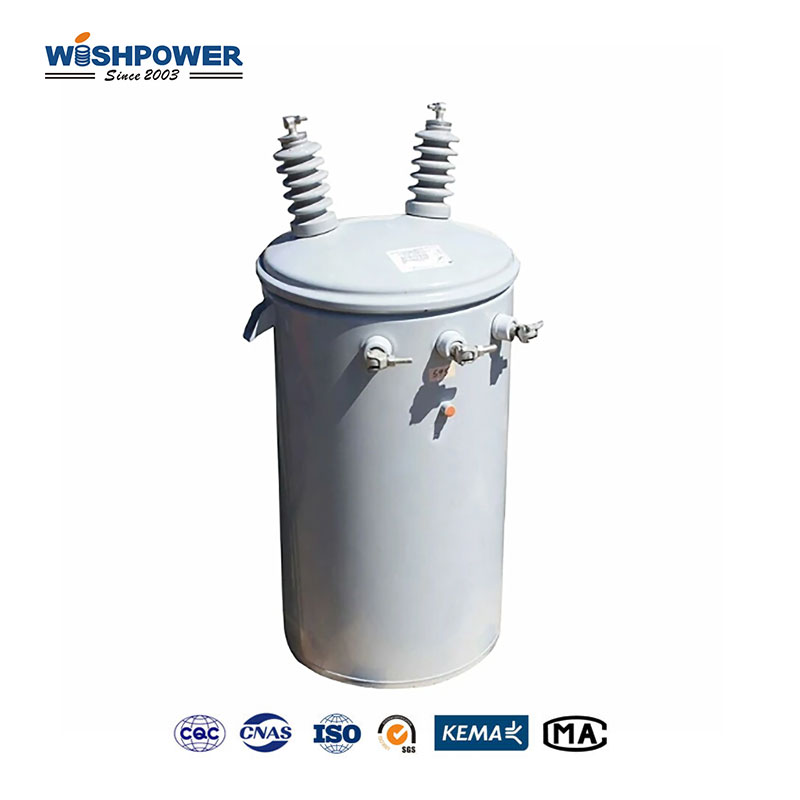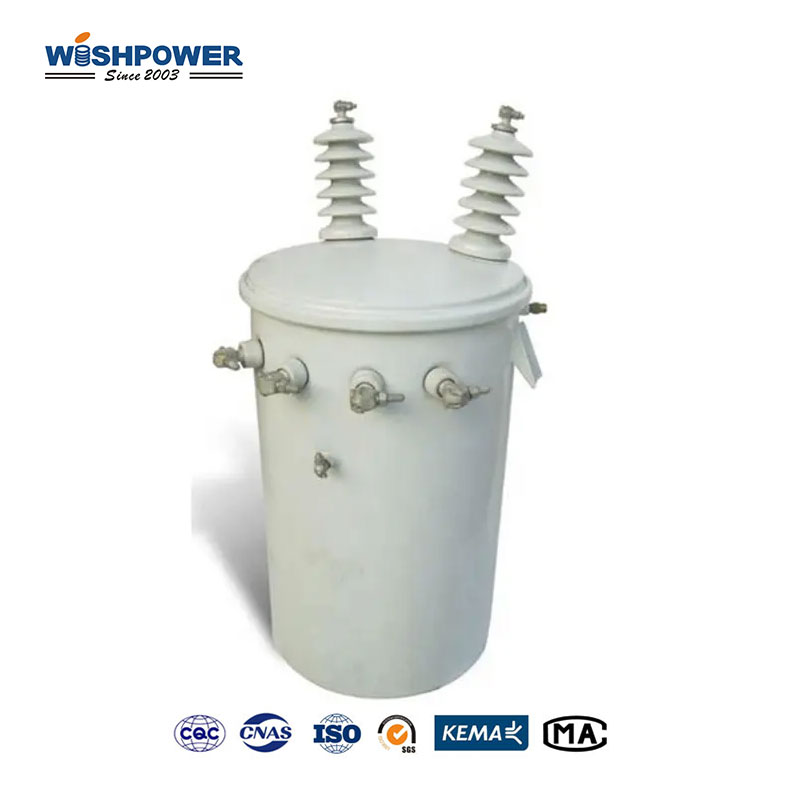What is an overhead transformer?
The overhead transformers are integral components of the power distribution system and are used to step down or step up voltage levels that meet the requirements of residential, commercial, or industrial users. These transformers, mounted on utility poles, are an essential part of how we make sure that electricity comes to people in urban and rural areas safely and efficiently. Their rugged design and flexibility make utility providers throughout the world like their solutions.

How do overhead transformers work?
The principle of operation of overhead transformers is electromagnetic induction. Secondary windings are surface mounted on the primary windings surrounding a magnetic core, which constitute these devices. The transmission line feeds high-voltage electricity to the primary winding and the usable voltage of the end user is obtained from the secondary winding. By ensuring efficient transmission of energy over long distances the process guarantees that there are no power losses.
Advantages of Overhead Transformers
- Cost-effectiveness
Although overhead transformers are quite cheap to produce and install in terms of underground systems. That means they are pole-mounted, cutting down on costly excavation work.
- Easy maintenance
These transformers are mounted on poles so they can be easily inspected, maintained, or replaced without a lot of heavy foundation work.
- Harsh Conditions
Overhead transformers feature rugged housings and high-grade insulating materials suitable for outdoor use.
- Flexibility and Scalability
Capacity and configuration determine whether overhead transformers are used in individual homes, small businesses, or large facilities. They are very adaptable for many applications.
- Efficient Power Delivery
These transformers take high-voltage electricity to usable form near where it is consumed, thus minimizing energy losses over long distances.
Applications of Overhead Transformers
Residential Areas
In suburban and rural areas, they are used a lot to deliver electricity to homes through overhead transformers.
Commercial Establishments
Overhead transformers provide small businesses and commercial buildings with steady reliable power.
Industrial Operations
Overhead transformers are used to efficiently power machinery and equipment in some light industrial applications.
Renewable Energy Systems
Renewable energy facilities, e.g. wind and solar farms, usually use overhead transformers to step up or step down voltage levels for incorporation into the grid.
Types of Overhead Transformers
- Single Phase Overhead Transformers
For use in residential and light commercial facilities, these transformers are ideal. With their simple and effective operation, they are ideal for delivering power to smaller loads.
- Overhead Transformers, Three Phase.
Industrial and large commercial applications for which higher power demands are considered utilize three-phase transformers.
- Pole-Mounted Transformers
These are the kinds of overhead transformers that are mounted directly onto utility poles which are more convenient and cost effective to use.
- Pad-Mounted Transformers
Pad-mounted transformers are not technically overhead though tandem systems use overhead for suburban areas and pad-mounted transformers complement those overhead systems.
Why Are Overhead Transformers Important?
Modern power distribution system depends upon overhead transformers. They are the bridge between high-voltage transmission networks and the needs of low-voltage consumers in a safe, efficient way. These products are the face of utility around the world due to their adaptability, durability, and cost-effectiveness.
Future Trends
Overhead transformers are expected to become more desirable as the global power grid matures to suit renewable energy and smart grid technologies. These important devices are being shaped by innovations such as environmentally friendly insulation materials, increased efficiency, and advanced monitoring systems. Furthermore, the increasing attention on rural electrification in developing countries reinforces the importance of overhead transformers in bridging that energy access gap.
Conclusion
Distribution networks are based around overhead transformers as a reliable, cost-effective, adaptable means of power delivery across a broad range of applications. Their role in guaranteeing the world’s energy access and efficiency will remain indispensable as technology evolves and energy need continues to extend.
If you have different opinions or want to know more, please leave a message on the website or contact us directly at info@wishpower.net

















